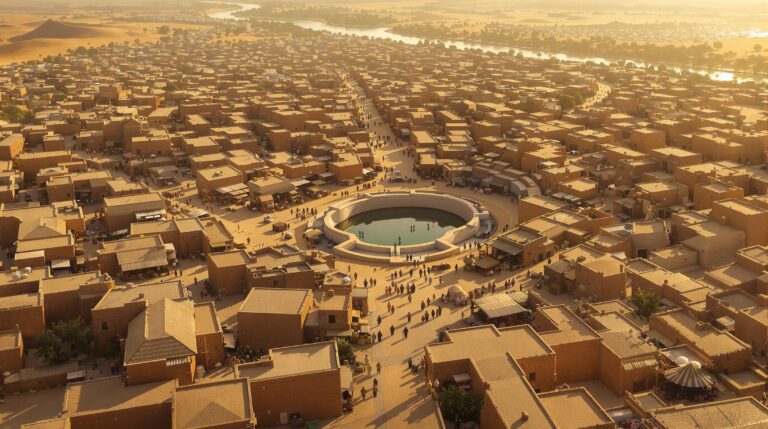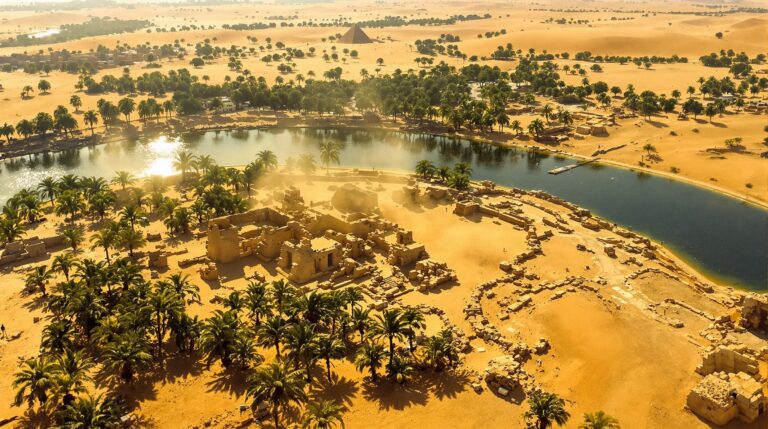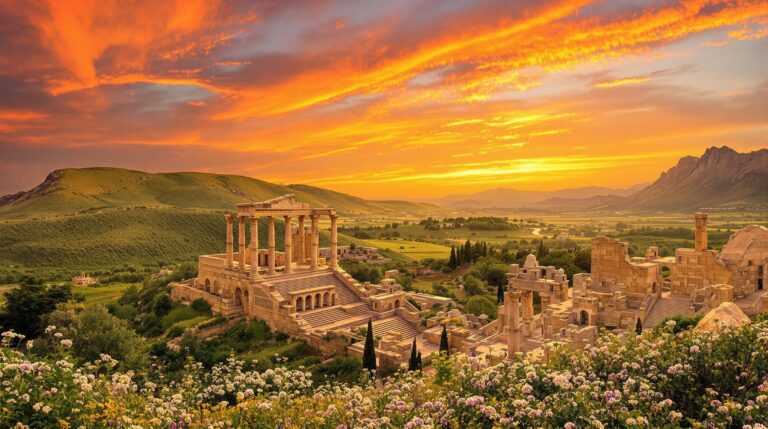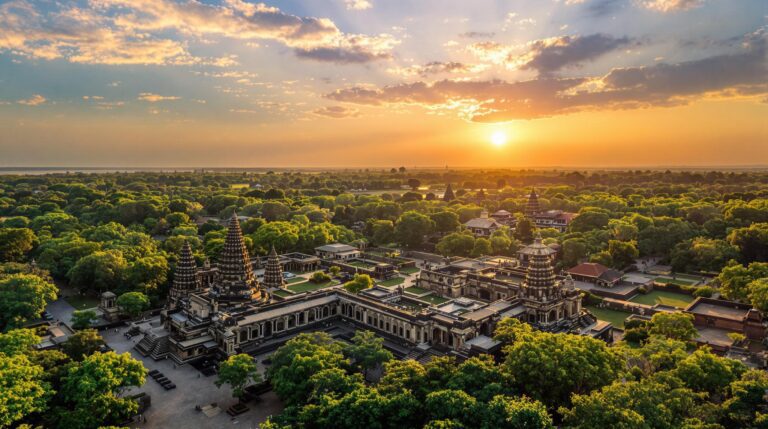Ancient Civilizations of the Amazon
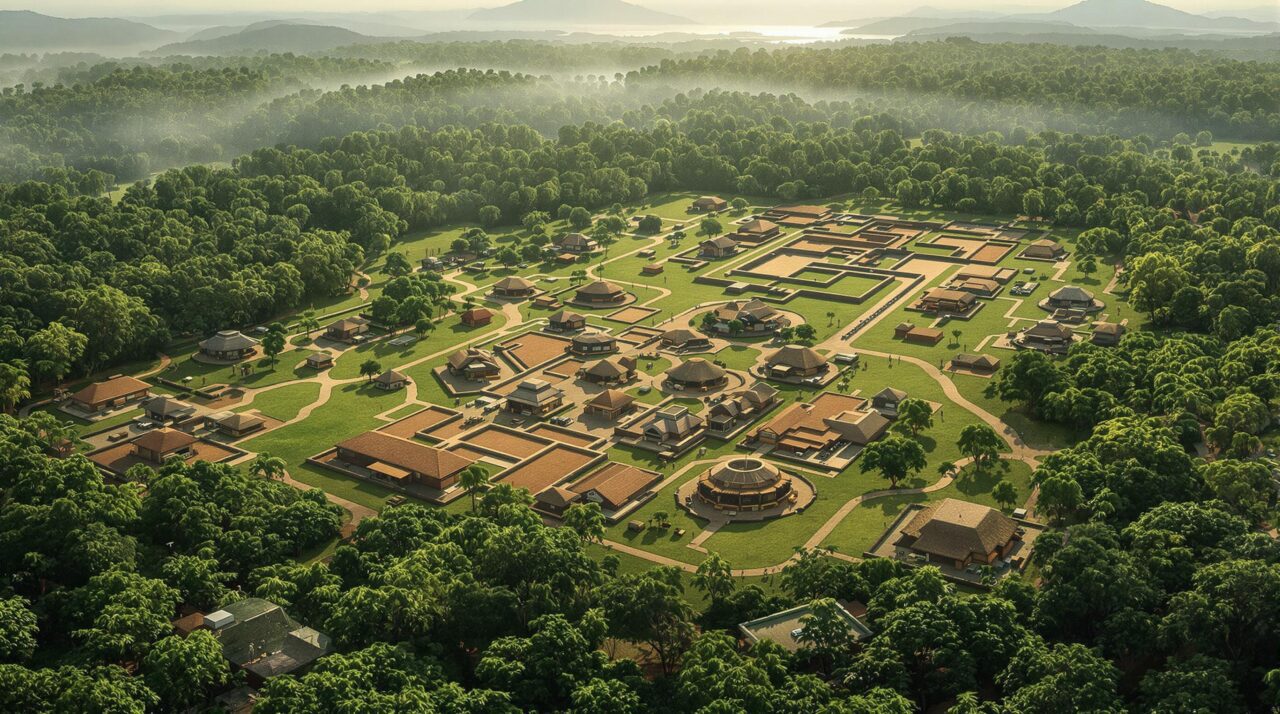
The ancient civilizations of the Amazon present a compelling narrative that challenges conventional views of the region as untouched wilderness.
These societies, including the Casarabe and Marajoara, engineered complex landscapes and developed sustainable agricultural practices.
Their monumental earthworks and intricate settlement patterns raise questions about the scale of human impact on the environment.
What drove these cultures to thrive in such a challenging ecosystem, and how do their legacies inform contemporary understandings of environmental stewardship?
Summary of Key Points
Hide- The Amazon was home to diverse pre-Columbian cultures, including the Casarabe, Santarém, and Marajoara, each with unique societal structures and practices.
- Ancient civilizations in the Amazon developed advanced agricultural techniques, such as terra preta and polyculture systems, promoting sustainability and resource management.
- Archaeological evidence reveals complex settlement patterns, including urban planning and organized habitation, reflecting sophisticated social structures and population estimates.
- Cultural expressions, such as pottery and burial practices, highlight the beliefs and class divisions within Amazonian societies, indicating societal complexity.
- Modern technologies like LiDAR and satellite imagery are revolutionizing the discovery and understanding of ancient Amazonian civilizations, challenging perceptions of the region as untouched.
Rethinking the “Pristine Wilderness” Idea on the Amazon
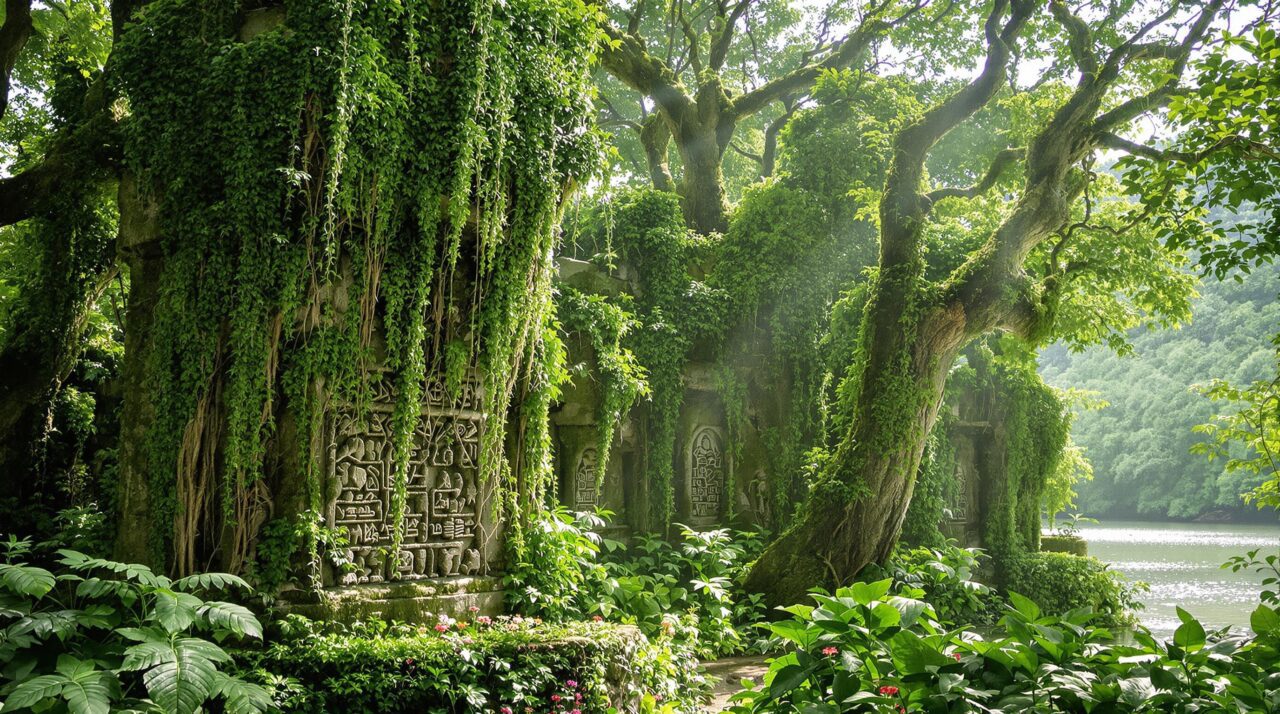
The concept of the Amazon as a “pristine wilderness” has come under scrutiny as scholars reassess early accounts from explorers and historians.
These narratives often reflect a misunderstanding of the region, overlooking the complex interactions between ancient civilizations and their environment.
As evidence mounts, the question arises: how has this evolving perspective reshaped our understanding of the Amazon’s ecological and cultural history?
Shifting Perceptions of the Amazon’s Past
The Amazon, once regarded as a pristine wilderness, is increasingly viewed through the lens of ancient human influence and landscape engineering.
Recent advancements in satellite imagery and aerial surveys reveal signs of extensive modification, challenging the notion of untouched nature.
How might these technological insights reshape our understanding of the region’s historical relationship between humans and the environment?
From untouched forest to engineered landscape
Although often romanticized as a pristine wilderness, the Amazon rainforest reveals a complex history of human interaction and environmental modification that challenges conventional perceptions.
Evidence suggests ancient civilizations actively shaped the landscape through agriculture, engineered earthworks, and resource management.
- Babylon: Ancient City of Power and Mystery
- Etruscan Civilization: Secrets of the Etruscans Uncovered
- The Rise and Fall of Carthage: From Empire to Ashes
- Ancient Persia: Golden Age and the Achaemenid Legacy
- Göbekli Tepe Mystery: Ancient Site Redefines History
- Harappan Civilization: Inside the Planned Cities of the Indus Valley
This intricate relationship raises questions about the narrative of untouched nature, inviting a reevaluation of how humanity has coexisted with this essential ecosystem throughout history.
The impact of satellite imagery and aerial surveys
Advancements in satellite imagery and aerial surveys have revolutionized the understanding of the Amazon, revealing a landscape that is far from the untouched wilderness often depicted in popular narratives.
These technologies uncover ancient earthworks, agricultural fields, and complex settlement patterns, suggesting a history of human influence.
This shift in perspective challenges long-held beliefs and invites a reexamination of the Amazon’s ecological and cultural heritage.
Early Observations from Explorers and Historians
Early accounts from 16th-century conquistadors challenge the notion of the Amazon as a “pristine wilderness,” revealing a landscape shaped by its Indigenous inhabitants.
These explorers described societies that were not only populous but also organized, suggesting a complex social structure that belies the idea of a wild, untouched environment.
As historians reassess these observations, questions arise about the true extent of human influence on the Amazon’s ecology and civilization.
Accounts from 16th-century conquistadors
As the 16th century unfolded, the accounts of conquistadors exploring the Amazon began to challenge the prevailing notion of the region as a pristine wilderness untouched by human influence.
These narratives revealed:
- Complex agricultural practices
- Evidence of extensive road networks
- Settlement patterns indicative of organized societies
- Rich biodiversity shaped by human interaction
Such observations prompted a reevaluation of the Amazon’s historical landscape and its inhabitants’ profound impact.
Indigenous societies described as populous and organized
The accounts of 16th-century conquistadors not only illuminated the Amazon’s agricultural practices but also painted a vivid picture of its indigenous societies, which were far more populous and organized than previously assumed.
These narratives challenge the notion of a “pristine wilderness,” revealing complex social structures, trade networks, and cultural richness that thrived long before European contact, urging a reevaluation of historical perspectives on the Amazon.
Major Pre-Columbian Settlements and Cultures
The Amazon region harbors a complex tapestry of pre-Columbian cultures, each contributing unique aspects to its historical narrative. Notable among these are the enigmatic geoglyphs of Acre and Mato Grosso, which prompt questions about their purpose and the societies that created them.
Additionally, the Casarabe culture of Bolivia, along with the Santarém and Marajoara cultures, reveals the rich diversity and sophistication of ancient settlements in this vast landscape.
The Mysterious Geoglyphs of Acre and Mato Grosso
The geoglyphs of Acre and Mato Grosso present a fascinating puzzle for researchers exploring pre-Columbian Amazonian cultures.
These intricate geometric earthworks, visible only from above, raise questions about their intended purpose, with theories suggesting both ceremonial and agricultural functions.
What insights might these ancient structures yield about the societies that created them?
Geometric earthworks visible from above
Geometric earthworks, often referred to as geoglyphs, reveal the intricate relationship between ancient cultures and their environment in the Amazon.
These formations prompt questions about their purpose and construction, suggesting advanced societal organization.
- Complex designs spanning vast areas
- Evidence of cultural expression
- Potential links to astronomical observations
- Insights into ancient land management practices
Such patterns invite deeper exploration into their significance.
Hypotheses about ceremonial and agricultural functions
Intriguing questions arise regarding the potential ceremonial and agricultural functions of the geoglyphs found in Acre and Mato Grosso.
Scholars speculate these formations may have served as ritual sites, fostering community cohesion, or as markers for agricultural practices, enhancing crop production.
Each hypothesis invites deeper exploration into the intricate relationship between these ancient peoples and their environment, revealing a civilization rich in cultural significance.
The Casarabe Culture of Bolivia
Recent discoveries utilizing LiDAR technology have disclosed the extensive settlements of the Casarabe culture in Bolivia, prompting questions about their scale and sophistication.
These findings suggest advanced water management systems that indicate a complex social organization capable of sustaining large populations.
What might this illustrate about their way of life and interactions with the surrounding environment?
Discovery of massive settlements using LiDAR
As researchers explored the dense jungles of Bolivia, they uncovered remarkable evidence of the Casarabe culture, a civilization that thrived long before European contact.
The use of LiDAR technology revealed:
- Extensive urban layouts
- Monumental earthworks
- Complex ceremonial structures
- Evidence of sophisticated societal organization
These findings challenge previously held notions of Amazonian societies, suggesting a vibrant mosaic of life and culture in the region.
Water management systems and social organization
The intricate water management systems of the Casarabe culture reveal a profound understanding of hydraulic engineering that supported their complex society.
These systems, featuring canals and reservoirs, not only facilitated agriculture but also fostered social organization and trade.
How did this mastery of water influence their community structure?
The interplay between environment and society in Casarabe illustrates a remarkable adaptability to Amazonian landscapes.
The Santarém and Marajoara Cultures
The Santarém and Marajoara cultures present a fascinating intersection of artistic expression and societal complexity in pre-Columbian Amazonia.
Their intricate pottery, often adorned with elaborate motifs, raises questions about the cultural significance and aesthetic values of these communities.
Additionally, evidence suggesting class divisions and regional trade invites further exploration of their social structures and economic interactions within the broader context of ancient Amazonian civilizations.
Complex pottery and artistic expression
Complex pottery and artistic expression in the Santarém and Marajoara cultures reveal a lively mosaic of creativity and social structure.
These artifacts invite exploration of:
- Intricate designs and motifs reflecting cultural beliefs
- The use of natural resources for pigment and texture
- Ceremonial purposes and community rituals
- The role of artisans in societal organization
Such elements illustrate the profound connection between art and identity.
Evidence of class divisions and regional trade
Although often overshadowed by the grandeur of other ancient civilizations, the Santarém and Marajoara cultures provide compelling evidence of class divisions and regional trade networks that shaped their societies.
Archaeological findings, including distinct burial practices and varying artifact qualities, suggest a stratified social structure.
Additionally, the presence of exotic goods indicates extensive trade routes, highlighting the interconnectedness of these cultures within the Amazonian landscape.
Engineering the Jungle: Environmental Mastery
Ancient civilizations of the Amazon demonstrated remarkable ingenuity in their environmental engineering, crafting a landscape that thrived through human intervention.
The creation of terra preta, along with intricate forest gardens and agroforestry systems, reveals a sophisticated understanding of sustainable agriculture.
Additionally, the construction of roadways, canals, and defensive structures hints at a complex society adept at traversing and transforming its jungle environment.
Terra Preta: The Amazon’s Man-Made Soil
Terra Preta, the enigmatic dark earth of the Amazon, raises intriguing questions about its unique properties and composition.
This man-made soil not only exhibits remarkable fertility but also suggests advanced agricultural practices employed by ancient civilizations.
How did these cultures engineer such a sustainable resource, and what lessons can modern society learn from their environmental mastery?
Properties and composition of dark earth
Dark earth, known as terra preta, stands as a remarkable demonstration of human ingenuity in the Amazon rainforest.
Its unique properties and composition reveal a sophisticated understanding of environmental manipulation:
- High carbon content from organic materials
- Enhanced nutrient retention capabilities
- Diverse microbial activity promoting soil health
- Dark coloration resulting from charcoal and decomposed biomass
These elements combine to create a fertile landscape, challenging conventional perceptions of ancient agricultural practices.
Long-term fertility and sustainable agriculture
While the Amazon rainforest is often perceived as an untamed wilderness, the soil beneath its dense canopy tells a different story of environmental mastery and agricultural innovation.
Terra Preta, the man-made soil, showcases ancient techniques that enhanced fertility and sustainability. This remarkable achievement reflects a deep understanding of ecological balance, enabling civilizations to thrive harmoniously with their environment, challenging conventional narratives of primitive agriculture.
Forest Gardens and Agroforestry Systems
In the lush landscapes of the Amazon, ancient civilizations engaged in the intentional planting of useful species, creating intricate ecosystems known as forest gardens.
These hidden orchards, shaped over generations, reveal a sophisticated understanding of biodiversity and sustainability.
How did these early inhabitants engineer such productive environments, and what lessons can modern society glean from their practices?
Intentional planting of useful species
Throughout history, numerous ancient civilizations in the Amazon have demonstrated remarkable ingenuity in their approach to agriculture, particularly through the intentional planting of useful species. This practice facilitated biodiversity and sustainable living.
Key aspects include:
- Selection of native crops for resilience
- Integration of plants for mutual benefits
- Utilization of polyculture systems
- Preservation of soil health
Such methods exemplified their profound understanding of ecological balance.
Hidden orchards shaped over generations
The ancient civilizations of the Amazon cultivated more than just crops; they meticulously engineered hidden orchards that have evolved over generations, creating complex agroforestry systems.
These forest gardens, rich in biodiversity, reveal a deep understanding of ecological balance.
What drove these societies to innovate? Their legacy prompts questions about sustainable practices in harmony with nature, reflecting a profound connection to the land.
Roadways, Canals, and Defensive Structures
The engineering feats of ancient Amazonian civilizations reveal a sophisticated understanding of their environment, particularly in the construction of raised causeways and ditches designed for flooded areas.
These features suggest not only practical solutions to traversing the challenging landscape but also patterns indicative of centralized planning and communal effort.
What implications might these structures hold for our understanding of social organization and resource management in these ancient societies?
Raised causeways and ditches in flooded zones
Raised causeways and ditches emerged as ingenious solutions to the challenges posed by the Amazon’s seasonal flooding.
These structures exemplified the adaptability of ancient civilizations, revealing their engineering prowess and environmental mastery.
- Elevated pathways facilitated trade and communication
- Ditches managed water flow effectively
- Enhanced agricultural practices through irrigation
- Provided protection from flooding for settlements
Patterns suggesting centralized planning
While examining the intricate landscape of the Amazon, one cannot help but wonder about the level of organization required to construct the extensive roadways, canals, and defensive structures that characterize ancient civilizations in the region.
These features suggest a centralized planning system, indicating a sophisticated understanding of environmental management. Such engineering feats reveal the remarkable ingenuity and collaborative spirit of these ancient societies.
Population Estimates and Urban Complexity
In examining the ancient civilizations of the Amazon, one must consider the significance of settlement patterns as they relate to population estimates.
Evidence suggests that these societies possessed a degree of urban planning that challenges traditional views of pre-Columbian life in the region.
What do these indications of organized habitation reveal about the complexity and scale of Amazonian urban environments?
Estimating Populations from Settlement Patterns
Estimating populations from settlement patterns in the Amazon presents significant challenges, particularly due to issues of preservation and dense undergrowth that obscure archaeological evidence.
Recent models that analyze land use and mound clusters offer intriguing insights, suggesting a more complex urban landscape than previously understood.
How these factors influence population estimates remains a critical question in unraveling the history of ancient Amazonian civilizations.
Challenges with preservation and undergrowth
As researchers explore the complexities of ancient Amazonian civilizations, they encounter significant challenges related to preservation and the dense undergrowth that obscures archaeological sites.
These obstacles complicate the understanding of urban complexity and population estimates, leading to critical inquiries such as:
- The extent of human impact on the landscape
- Methods for clearing and preserving sites
- The role of climate in preservation
- Techniques for remote sensing analysis
Recent models based on land use and mound clusters
While exploring the intricate relationship between land use and population dynamics in ancient Amazonian civilizations, researchers have begun to develop innovative models that leverage mound clusters as indicators of settlement patterns.
These clusters, revealing insights into agricultural practices and social organization, prompt questions about urban complexity. By analyzing spatial arrangements, scholars aim to estimate population sizes and understand the socio-political structures of these remarkable societies.
Signs of Urban Planning in Amazonian Societies
Evidence suggests that ancient Amazonian settlements were meticulously aligned with cardinal directions, hinting at a sophisticated understanding of geography and orientation.
This careful planning is further reflected in the clusters of residential and ceremonial zones, which indicate a complex social structure and communal organization.
Such characteristics raise intriguing questions about the extent of urban planning in these societies and their capacity for coordinated development.
Settlements aligned in cardinal directions
The alignment of ancient Amazonian settlements along cardinal directions raises intriguing questions about the urban planning practices of these societies. Such organization suggests a sophisticated understanding of geography and environment, potentially influencing social cohesion and cultural identity.
Key aspects include:
- Orientation towards celestial events
- Utilization of natural resources
- Facilitation of trade routes
- Reflection of spiritual beliefs on land use
These factors contribute to urban complexity.
Clusters of residential and ceremonial zones
Clusters of residential and ceremonial zones in ancient Amazonian societies reveal a complex tapestry of urban planning that reflects both social structure and cultural practices.
These spatial arrangements suggest a deliberate organization, where communal spaces fostered social cohesion and ritualistic gatherings.
This urban complexity invites exploration of how these societies navigated environmental challenges while embedding their values within the landscape, showcasing a profound connection to their surroundings.
Collapse, Resistance, and Cultural Survival
The decline of ancient Amazonian civilizations raises questions about the interplay of environmental changes, social structures, and external pressures.
How did these factors contribute to the eventual collapse, and what mechanisms of resistance enabled some communities to endure?
Furthermore, examining the continuity among Indigenous peoples today offers a glimpse into the resilience of cultural identities amidst historical upheaval.
Factors Behind the Decline of These Societies
The decline of ancient Amazonian civilizations can be attributed to a complex interplay of factors, particularly the devastating epidemics that followed European contact.
These diseases not only decimated populations but also disrupted established trade networks and local economies.
As these societies struggled to adapt, questions arise about their resilience, cultural survival, and the remnants of their once-thriving communities.
Epidemics following European contact
Although the arrival of Europeans in the Amazon heralded new opportunities for trade and interaction, it simultaneously released a catastrophic wave of epidemics that ravaged Indigenous populations.
These diseases not only decimated communities but also altered social structures and cultural practices.
- Smallpox and measles devastated local tribes
- Loss of traditional knowledge due to mortality
- Disruption of kinship ties and alliances
- Resistance strategies emerged in response
Disruption of trade and local economies
Epidemics released by European contact not only devastated Indigenous populations but also dismantled intricate trade networks that had existed for centuries.
The collapse of these networks led to economic isolation, undermining local economies that thrived on interdependence.
As resources dwindled, communities faced increased vulnerability, raising questions about resilience and the capacity to adapt in the face of such profound disruption.
Continuity Among Indigenous Peoples Today
The resilience of Indigenous peoples in the Amazon raises questions about the continuity of cultural traditions that trace back to ancient civilizations.
How do oral histories and ancestral practices persist despite centuries of external pressures and societal collapse?
This inquiry into their cultural survival highlights the intricate ways in which knowledge is preserved and adapted across generations.
Cultural traditions linked to ancient practices
While many ancient civilizations of the Amazon faced significant challenges that threatened their existence, the resilience of their cultural traditions offers a compelling narrative of survival and continuity.
These traditions reveal deep connections to the land and community, fostering a sense of identity and belonging:
- Rituals celebrating nature’s cycles
- Traditional agricultural practices
- Craftsmanship and artistry
- Music and dance as communal expressions
Oral histories and knowledge passed down
Although many ancient Amazonian civilizations faced collapse due to external pressures, the oral histories and knowledge they preserved have played an essential role in the resistance and cultural survival of their descendants.
These narratives, rich with ancestral wisdom, serve as guiding beacons, instilling identity and resilience.
How do these stories shape contemporary practices? They foster a profound connection to land, culture, and community, embodying enduring strength.
Why Amazonian Civilizations Matter Today
The significance of Amazonian civilizations extends beyond their historical context, prompting a reevaluation of the region’s cultural legacy.
As researchers investigate how these societies shaped their environment, questions arise about the implications for modern sustainability practices.
What insights might archaeology offer about the future of the Amazon and its preservation?
Reframing the Region’s Historical Importance
The historical narrative surrounding Amazonian civilizations often portrays the region as an uninhabited wilderness, a notion that warrants critical examination.
By reassessing the enduring legacy of Indigenous cultures, one can uncover a vibrant mosaic of advanced societal structures and ecological stewardship that challenges this myth.
How might these reframed interpretations influence contemporary understandings of environmental sustainability and cultural heritage in the Amazon today?
Debunking the myth of the empty jungle
While many have long perceived the Amazon rainforest as a vast, uninhabited wilderness, recent archaeological findings challenge this notion, revealing an intricate web of ancient civilizations that once thrived within its depths.
This understanding reshapes historical narratives, emphasizing:
- Advanced agricultural practices
- Complex societal structures
- Environmental stewardship
- Cultural richness
Such insights highlight the importance of recognizing the Amazon as a cradle of human achievement, not mere emptiness.
New frameworks for interpreting Indigenous legacy
Amidst the dense foliage of the Amazon, Indigenous civilizations have left an enduring legacy that invites deeper exploration and understanding.
New frameworks, emphasizing ecological wisdom and social organization, challenge traditional narratives that overlook their sophistication.
What the Future Holds for Amazon Archaeology
As technology advances, the potential for uncovering lost Amazonian settlements raises important questions about the future of archaeological practices in the region.
This technological evolution invites a critical examination of how best to balance the need for discovery with the imperative of conservation and cultural preservation.
What implications do these discussions hold for understanding the legacies of Amazonian civilizations in a rapidly changing world?
Technology’s role in uncovering lost settlements
Although the dense canopies of the Amazon rainforest have long obscured the remnants of its ancient civilizations, advancements in technology are beginning to illuminate these lost settlements, revealing a lively mosaic of human history.
- LiDAR mapping enhances visibility of structures
- Satellite imagery identifies patterns in land use
- Ground-penetrating radar uncovers buried artifacts
- Drones facilitate rapid site documentation
These innovations redefine our understanding of Amazonian heritage.
The debate over conservation and cultural preservation
While the remnants of ancient Amazonian civilizations offer invaluable insights into human history, the ongoing debate surrounding their conservation and cultural preservation raises critical questions about the future of these sites.
Advocates argue for the protection of indigenous heritage, while opponents emphasize development and economic growth.
This tension highlights the need for a balanced approach that respects cultural legacy and promotes sustainable progress.
Wrapping Up
The ancient civilizations of the Amazon, much like hidden jewels nestled within a dense forest canopy, challenge preconceived notions of an untouched wilderness.
Their intricate environmental management and urban planning reveal a narrative of human ingenuity and resilience.
As modern society grapples with pressing ecological concerns, understanding these cultures offers invaluable insights into sustainable practices.
The legacy of Amazonian civilizations not only enriches historical discourse but also beckons us to reconsider our relationship with nature and our role within it.

